There aren’t many places in the world where you can have a truly new and eye-opening foodie experience, however Saudi Arabia may just be one of them. While pork and alcohol are banned in the country, you’ll find that its spectrum of spices and traditional cooking methods more than make up for any prohibitions.
Shakshuka
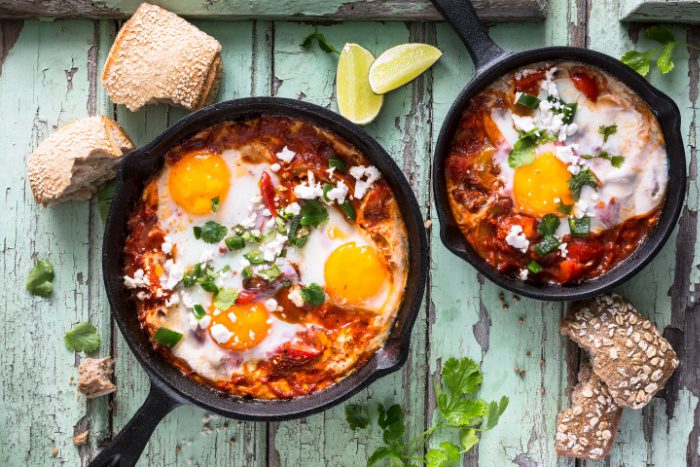
This dish is so divine that it’s found its way onto many a brunch menu. While it looks and tastes impressive, it’s surprisingly simple to make. It consists of a tomato sauce which has been elevated with a variety of spices, including cumin and paprika. Eggs are then added on top and then the whole pot is simmered until cooked—or it can be baked in the oven. Serve with a hunk of bread so that you can mop up all of the sauce at the end!
Maqshush
While it was recently announced that maqshush is the National Dessert of Saudi Arabia, it’s actually more commonly eaten for breakfast. It consists of buckwheat bites that are coated in a mixture of ghee and honey. These nibbles can then be topped with more ghee and honey, and a combination of dates, molasses and sugar.
Murtabak
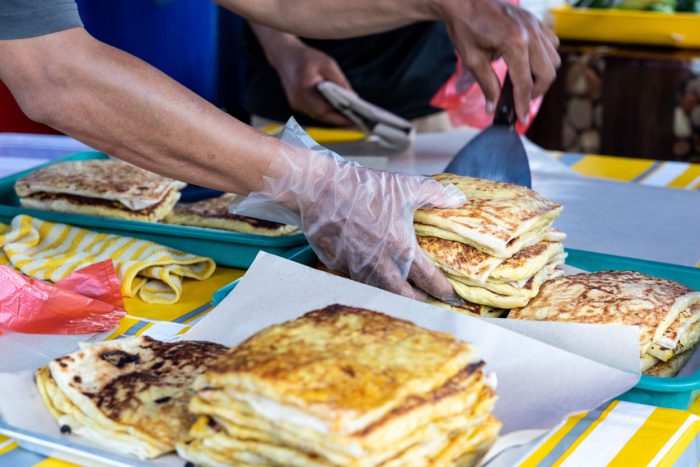
The versatile murtabak is a popular street food snack across Asia. It’s basically a filled flatbread that’s pan-fried to make the outside golden and crispy. The filling is generally made up of spiced mincemeat and onions, however you can pretty much stuff it with whatever you fancy, from indulgent cheese combinations to vegetable-based options.
Masoub
Masoub is also interchangeable between dessert and breakfast, and is a nutritious blend of mashed banana, wholewheat bread, honey and cream that results in a pudding-like consistency. This can then be topped with more fruit—such as dates or fried bananas—and a scattering of nuts! You could even add a little cinnamon or cardamom to add an aromatic dimension to the dish.
Shawarma
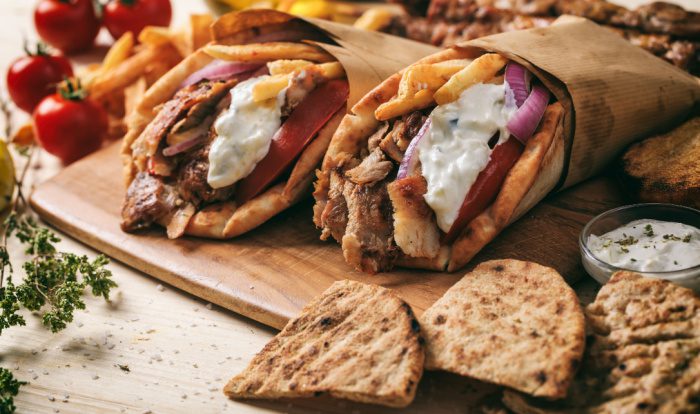
Another street food stalwart that has made it international, the shawarma is an irresistible fluffy flatbread cone wrapped around thin strips of juicy spit-roasted or rotisserie meat. The meat is usually marinated in a moreish mixture of spices, including cardamom, cumin, coriander, paprika and cayenne pepper, and then garnished with zesty yoghurt, salad and pickled vegetables.
Jareesh
Jareesh, a dish that fills your stomach and your heart, has been named as the National Dish of Saudi Arabia! This traditional recipe is made with boiled and crushed wheat, rice, meat, and spices like parsley, cumin, and coriander. It’s the perfect comfort food for a cold day, and can be adapted to suit your mood or cravings—popular variations include those with prawns, chicken or lamb.
Haneeth
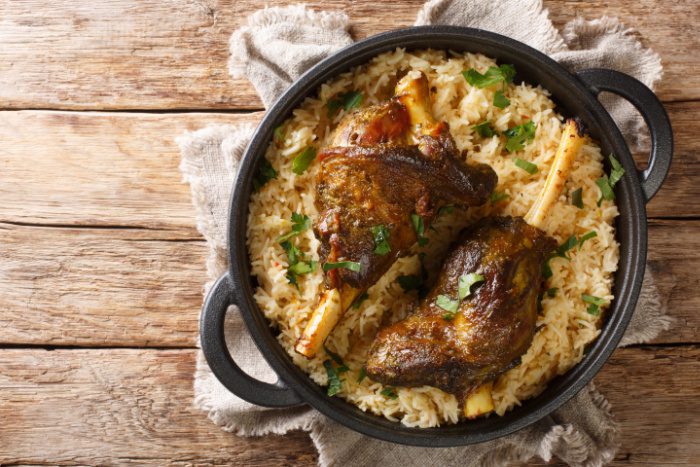
Commonly made in the Red Sea city of Abha, lamb haneeth consists of meat that has been marinated in a blend of spices—including cumin, coriander, turmeric, and black pepper—and then slow roasted with branches from the markh tree. When the meat is tender and ready to eat, it is typically served with rice, bread, or vegetables. Since the cooking process is a spectacle itself, this dish is often prepared for significant celebrations.
Tharid
Said to be the Prophet Muhammad’s favourite dish, tharid is a lamb stew made up of generous chunks of meat and vegetables, which are slow cooked with spices to make a truly melt-in-the-mouth medley. It’s typically served on top of the wafer-thin Emirati bread called rigog and is a popular way to break the fast during Ramadan.
Om Ali
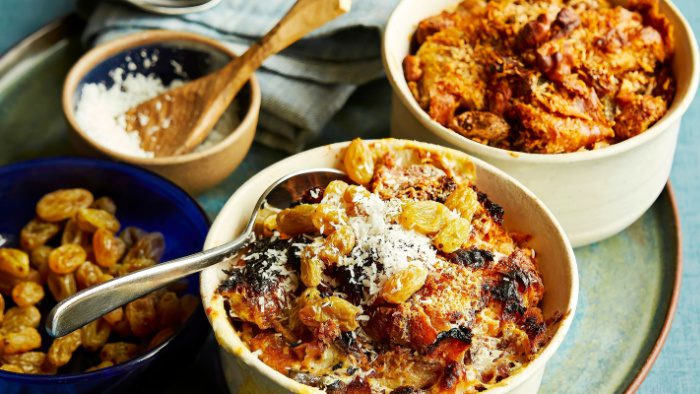
This classic Middle Eastern dessert is allegedly named after Ali, the wife of the Sultan of Egypt, who asked for it to be created to celebrate a revenge killing. Despite these gory backstory, the dish is actually a sweet and soothing bread pudding made with pastry, milk, butter, nuts and dried fruit…
Ma’Amoul

It’s practically impossible to have just one of these filled shortbread cookies, but luckily, you’ll tend to find a pile of them at celebrations like Eid. The buttery, crumbly biscuit balls are stuffed with sweet, sticky date paste and chopped walnuts before being dusted prettily with icing sugar.





